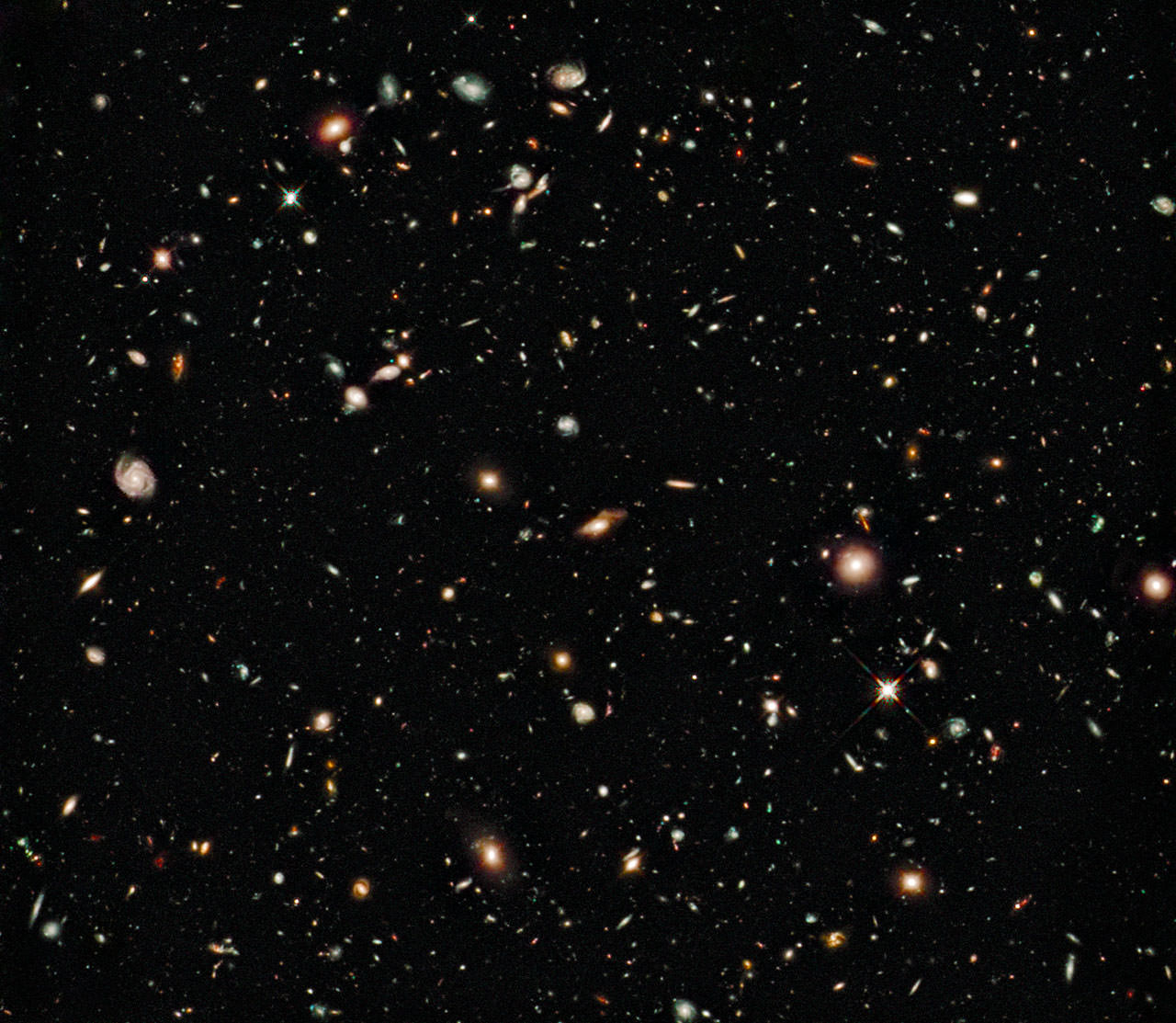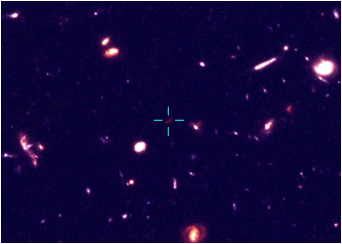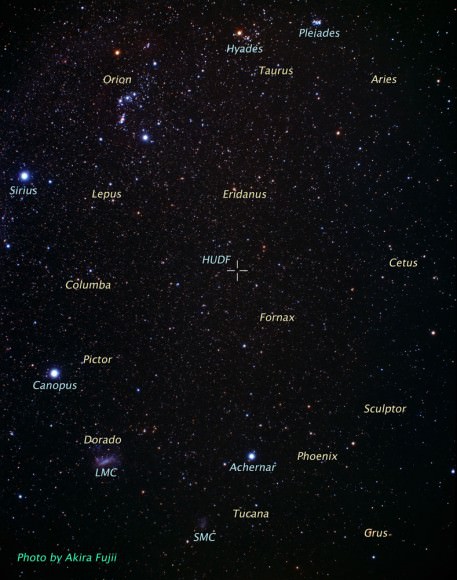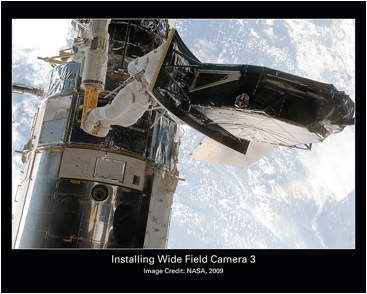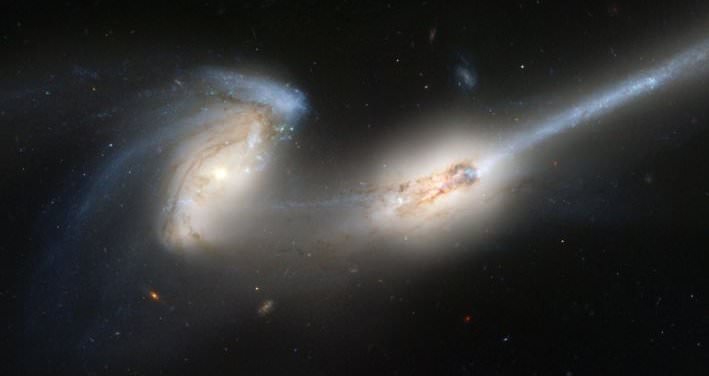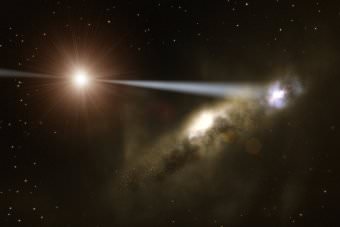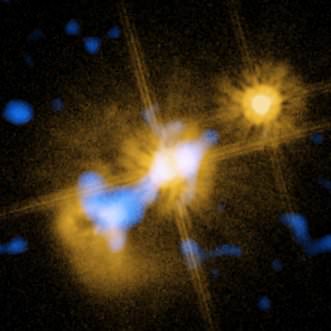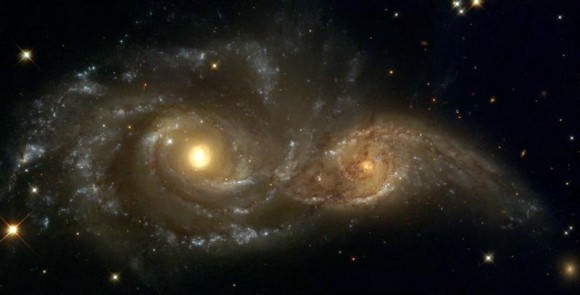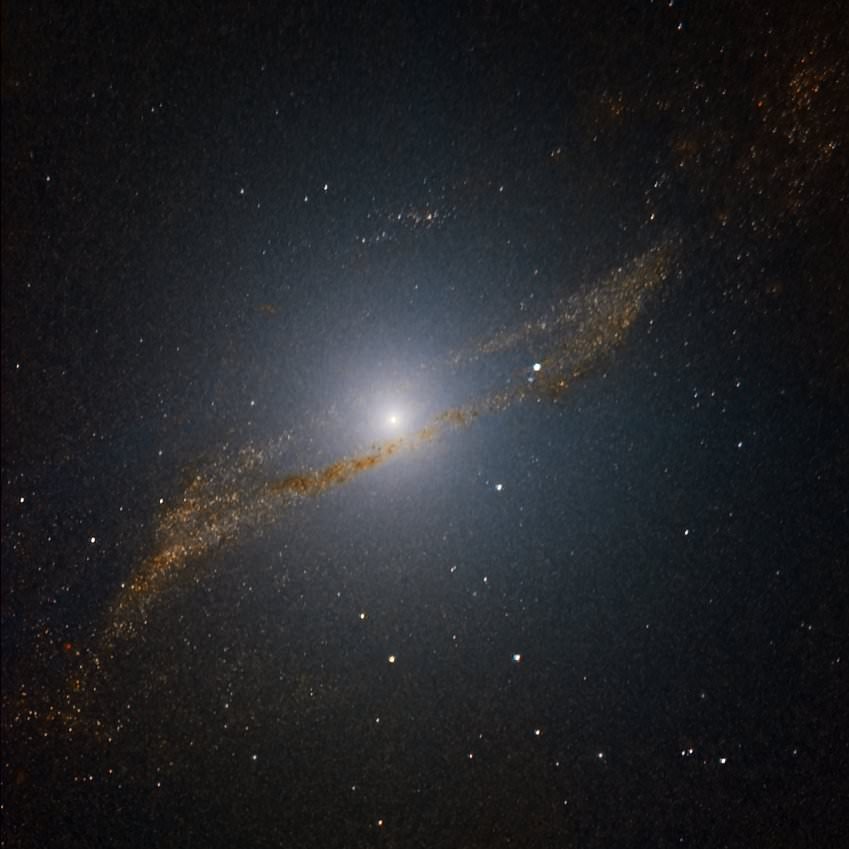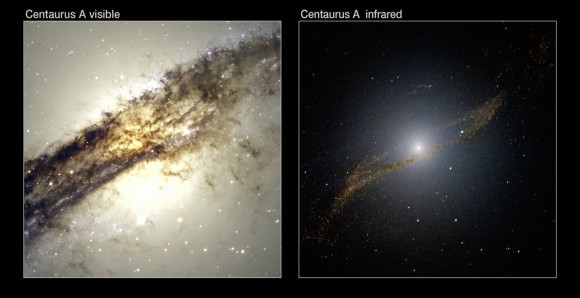[/caption]
An international team of astronomers has identified two new tidal streams in M31, the Andromeda galaxy. They are more-or-less intact remnants of dwarf galaxies that M31 has otherwise ripped to shreds.
One team – using the Suprime-Cam camera on Subaru – discovered two new dwarf galaxy shards by mapping the sky density of red giants in M31’s outskirts; the other – using the DEIMOS spectrograph on Keck II – separated the M31 red giant wheat from the Milky Way chaff.
In a project led by collaborators Mikito Tanaka and Masashi Chiba of Tohoku University, Japan, the astronomers used the Subaru 8-meter telescope and Suprime-Cam camera to map the density of red giants in large portions of M31, including the hitherto uncharted north side. This led to the discovery of two tidal streams to the northwest (streams E and F) at projected distances of 60 and 100 kiloparsecs (200,000 and 300,000 light-years) from M31’s nucleus. The study also confirmed a few previously known streams, including the little-studied diffuse stream to the southwest (stream SW), which lies at a projected distance of 60 to 100 kiloparsecs (200,000 to 300,000 light years) from M31’s nucleus.
The Spectroscopic and Photometric Landscape of Andromeda’s Stellar Halo (SPLASH) collaboration, a large survey of red giants in M31 lead by Puragra Guhathakurta, professor of astronomy and astrophysics at the University of California, Santa Cruz, has followed up with a spectroscopic survey of several hundred red giants in Streams E, F, and SW, using the Keck II 10-meter telescope and DEIMOS spectrograph at the W. M. Keck Observatory in Hawaii. Analysis of the spectra from this survey yields estimates of the line-of-sight velocity of the stars, which in turn allows M31 red giants to be distinguished from foreground stars (in the Milky Way). The spectral data confirmed the presence of coherent groups of M31 red giants moving with a common velocity.
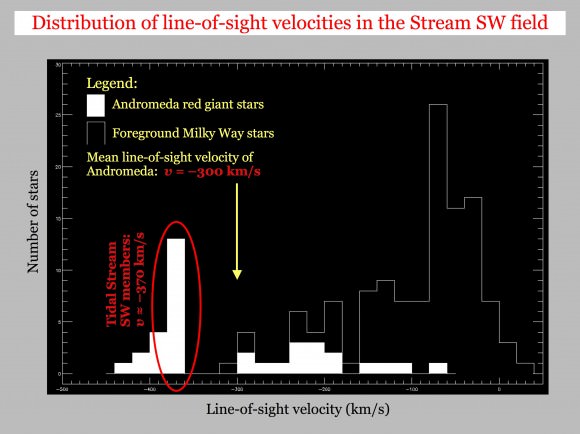
Stars spread over the vast reaches of a halo in a big galaxy like the Milky Way or M31 are characterized by old age, few elements other than helium and hydrogen (i.e. low metallicities; astronomers call all elements other than hydrogen and helium “metals”), and high velocities. The exceptional nature of these halo stars, when compared to stars in a galaxy’s disk, reflects the early dynamics and element formation of the galaxy when its appearance differed significantly from what we see today. Consequently, the halo provides important insights into the processes involved in the formation and evolution of a massive galaxy. In the best Big Bang model we have today – ΛCDM (Lambda Cold Dark Matter) – the outer halos are built up through the merger and dissolution of smaller, dwarf, satellite galaxies. “This process of galactic cannibalism is an integral part of the growth of galaxies,” said Guhathakurta.
The smooth, well-mixed population of halo stars in these large galaxies represents the aggregate of the dwarf galaxy victims of this cannibalism process, while the dwarf galaxies that are still intact as they orbit their large parent galaxy are the survivors of this process.
“The merging and dissolution of a dwarf galaxy typically lasts for a couple billion years, so one occasionally catches a large galaxy in the act of cannibalizing one of its dwarf galaxy satellites,” Guhathakurta said. “The characteristic signature of such an event is a tidal stream: an enhancement in the density of stars, localized in space and moving as a coherent group through the parent galaxy.”
Tidal streams are important because they represent a link between the victims and survivors of galactic cannibalism – an intermediate stage between the population of intact dwarf galaxies and the well-mixed stars dissolved in the halo.
The Andromeda galaxy is a unique test bed for studying the formation and evolution of a large galaxy, said Guhathakurta, “Our external vantage point gives us a global perspective of the galaxy, and yet the galaxy is close enough for us to obtain detailed measurements of individual red giant stars within it.”
One of the next steps will be to measure the detailed elemental compositions (“chemical properties”, in astronomer-speak) of red giants in these newly discovered tidal streams in M31. Comparing the chemical properties of tidal streams, intact dwarf satellites, and the smooth halo will be of particular significance, Guhathakurta said. Mikito Tanaka put it this way: “Further observational surveys of an entire halo region in Andromeda will provide very useful information on galaxy formation, including how many and how massive individual dwarf galaxies as building blocks are and how star formation and chemical evolution proceeded in each dwarf galaxy.”
At the present time, detailed studies of the chemical properties of tidal streams, intact dwarf satellites, and smooth stellar halos are possible only in the Milky Way and M31 galaxies and their immediate surroundings. Existing telescopes and instruments are simply not powerful enough for astronomers to carry out such studies in more distant galaxies. This situation will improve greatly with the advent of the planned Thirty Meter Telescope later in this decade, Guhathakurta said.
Tanaka’s team published their survey results in a recent Astrophysics Journal (ApJ) paper (the preprint is arXiv:0908.0245), and Guhathakurta’s team presented their results on the newly discovered tidal streams earlier this month at the 215th meeting of the American Astronomical Society in Washington, D.C.; they hope to have an ApJ paper on these results published later this year. You can read an earlier SPLASH paper, “The SPLASH Survey: A Spectroscopic Portrait of Andromeda’s Giant Southern Stream”, published in ApJ (the preprint is arxiv:0909.4540).
Sources: University of California, Santa Cruz, National Astronomical Observatory of Japan.

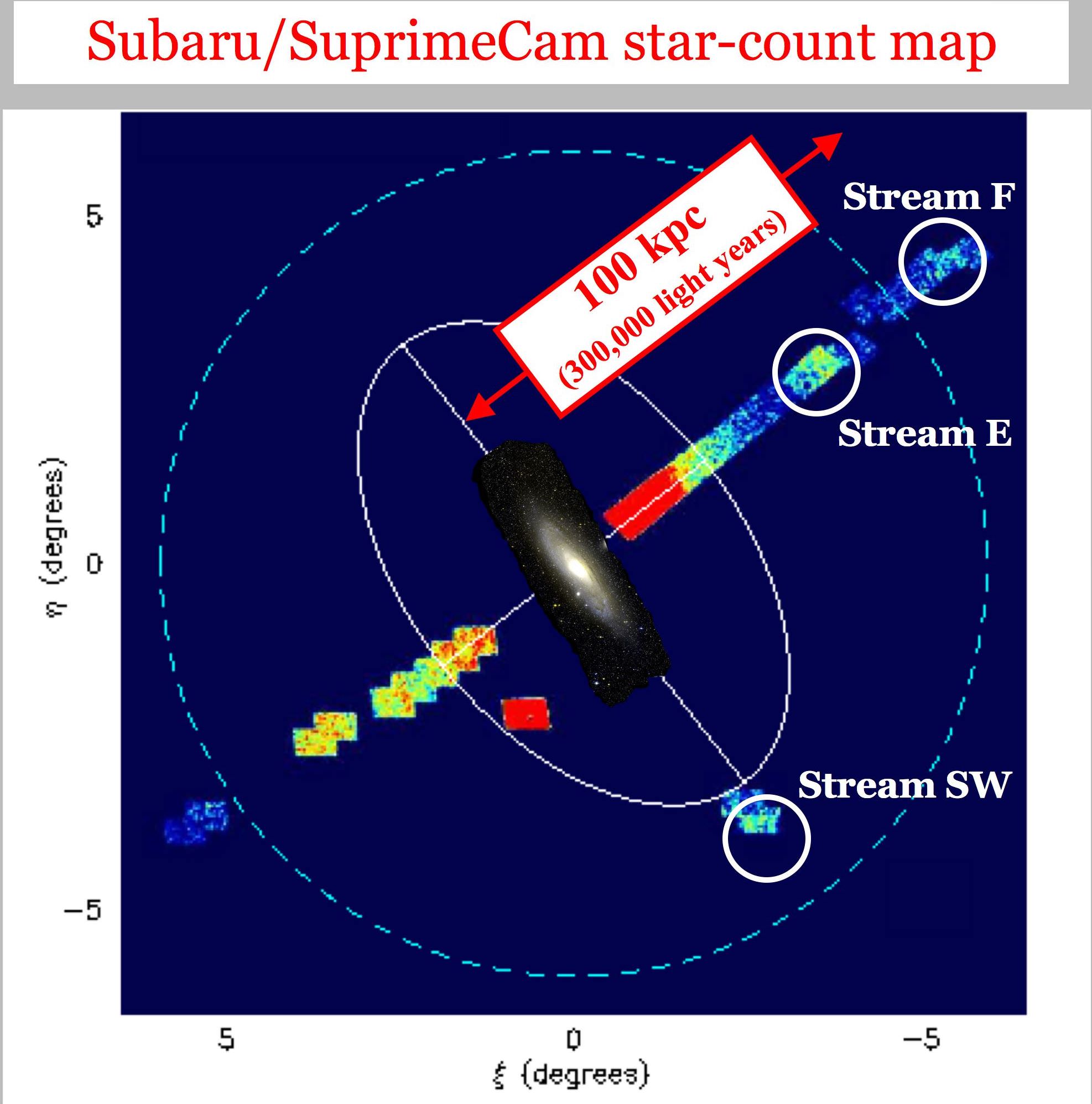
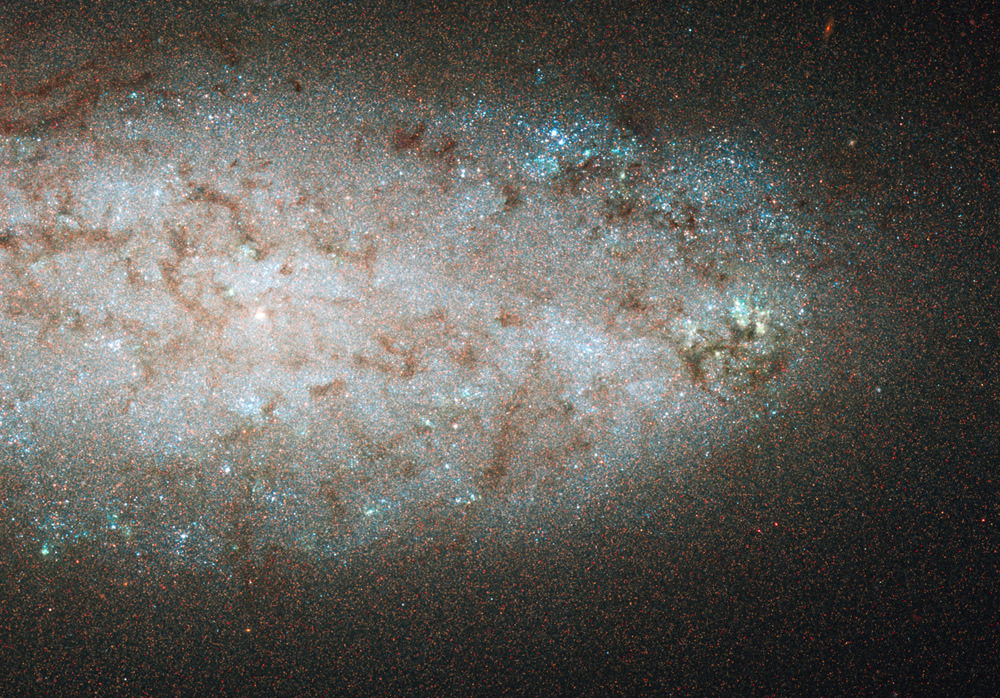
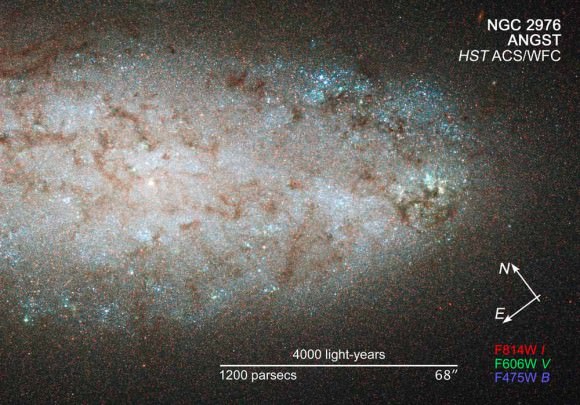

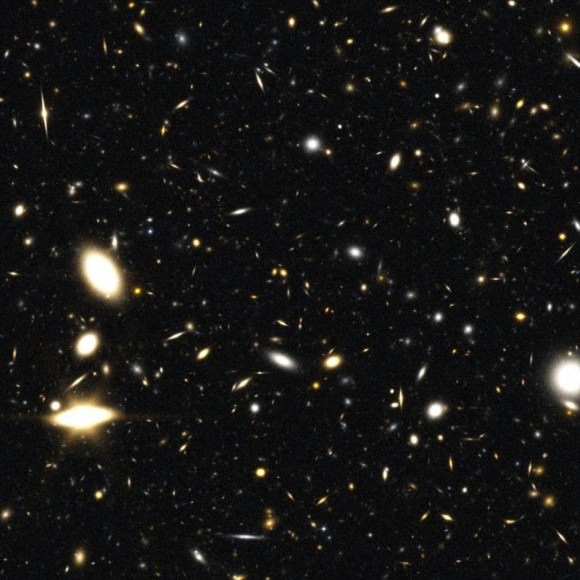
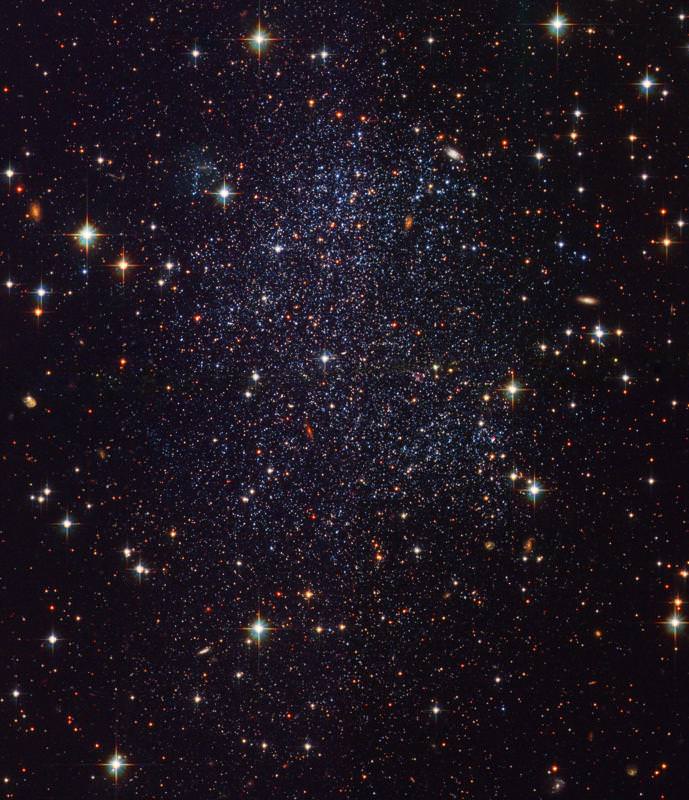
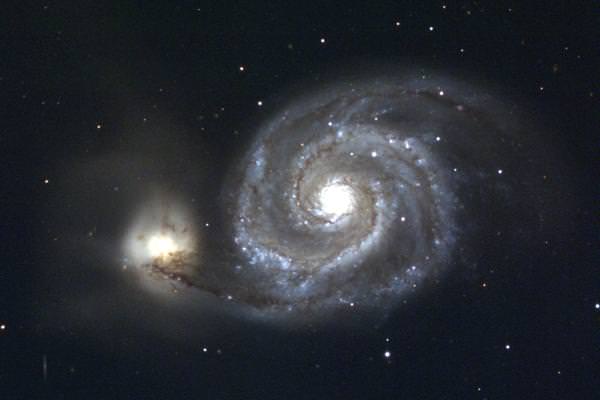
 To model the interaction, they began with a model of a simple galaxy with a mass distribution (broken into a disc, bulge, and halo) similar to that for M51. Their initial galaxy was initially free of spiral structure, but “gravitational instabilities in the stars [Note: as opposed to the galactic gas. Not in individual stars.] produce a multi-armed” and patchy spiral structure (known as a flocculent spiral). This flocculent nature was first predicted in a
To model the interaction, they began with a model of a simple galaxy with a mass distribution (broken into a disc, bulge, and halo) similar to that for M51. Their initial galaxy was initially free of spiral structure, but “gravitational instabilities in the stars [Note: as opposed to the galactic gas. Not in individual stars.] produce a multi-armed” and patchy spiral structure (known as a flocculent spiral). This flocculent nature was first predicted in a 
